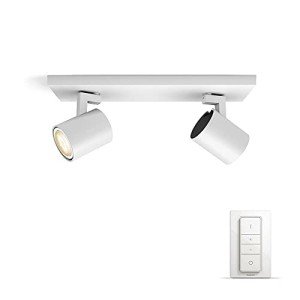Interior Lighting in the UK: A Comprehensive Guide
Interior lighting plays a crucial role in producing an environment, improving functionality, and revealing personal design within homes and businesses. In the UK, where the weather condition can be unpredictable, effective lighting is not only about visual appeals however also about making areas feel warm, welcoming, and practical. This post delves into different aspects of interior lighting, including types, patterns, suggestions, and regularly asked concerns.
Understanding the Importance of Interior Lighting
Lighting is typically considered the foundation of interior decoration. It influences mood, performance, and the perceived size of areas. The right lighting can:
- Enhance the architectural features of a room.
- Highlight artwork and decoration.
- Improve security and security.
- Influence efficiency in work areas.
- Produce a comfortable ambiance for relaxation.
Kinds Of Interior Lighting
Effective lighting design generally includes 3 main types of lighting: ambient, task, and accent.
1. Ambient Lighting
This is the primary source of light in a room, providing general illumination. Typical sources include:
- Ceiling-mounted fixtures
- Chandeliers
- Recessed lighting
- Soft wall sconces
Ambient lighting creates a foundation from which other lighting types can construct upon.
2. Task Lighting
Job lighting focuses on specific areas to help with activities such as reading, cooking, or working. This type of lighting assists to minimize eye stress and can drastically affect functionality. Typical sources consist of:
- Desk lamps
- Under-cabinet lights in cooking areas
- Reading lamps beside beds
- Mounted lights focused on work surfaces
3. Accent Lighting
Accent lighting includes drama and highlights specific items or areas, such as art work or architectural features. This kind of lighting can create visual interest and depth in a space. Sources include:
- Picture lights
- Decorative lamps
- Uplighters
- LED strip lights along shelves
Making use of a mix of these lighting types can lead to a healthy and multifunctional space.
Popular Lighting Trends in the UK
The interior lighting landscape in the UK continues to develop, influenced by style patterns, technology, and customer choices. Here are some popular patterns to enjoy:
- Smart Lighting: The arrival of smart innovation has actually transformed how people handle lighting in their homes. Smart bulbs and systems like Philips Hue enable users to control brightness and color temperature level by means of their smartphones.
- Minimalist Designs: Sleek, easy styles that blend flawlessly with interiors are dominating the marketplace. Pendant lights with fragile frames, LED strips, and geometric shapes are especially trendy.
- Industrial Lighting: This trend showcases raw, unwrapped products. Metal fixtures and Edison bulbs use a vintage touch that is both elegant and practical.
- Eco-Friendly Options: With increasing awareness of sustainability, lots of customers are turning to energy-efficient LED alternatives and fixtures made from sustainable materials.
Tips for Effective Interior Lighting Design
Designing an effective lighting plan needs thoughtful consideration of numerous factors. Here are some tips:
- Consider the Purpose of Each Room: Every space has a various function. Consider what activities will happen and what kind of lighting will support those activities.
- Layer Lighting: Employ numerous kinds of lighting within a room to develop depth and flexibility. Combine ambient, job, and accent lighting to improve both aesthetic appeals and functionality.
- Usage Dimmers: Dimmers enable control over brightness levels, making it possible for users to adjust lighting according to state of mind and time of day.
- Incorporate Natural Light: Make the many of natural light sources like windows. Use light, reflective colors for walls and home furnishings to take full advantage of brightness.
- Think About Color Temperature: Different color temperature levels (determined in Kelvins) create different environments. Lighting Store UK (around 2700K-3000K) are cozy, while cooler temperatures (4000K+) lend a more clinical or energetic feel.
Interior Lighting Mistakes to Avoid
To develop a well-lit area, it's important to prevent common lighting risks. Here are some mistakes to look for:
- Underestimating Wattage: Insufficient wattage can cause dim, unwelcoming areas.
- Disregarding Scale: Fixtures that are too little for a room can keep an eye out of location, while extra-large fixtures can overwhelm a space.
- Over-reliance on Ceiling Lights: Relying solely on overhead lighting can produce uninviting shadows; balance with extra lighting types.
- Poor Placement: Misplaced lights can produce areas that are too intense or too dark. Plan positionings attentively.
Frequently asked question Section
1. What is the distinction in between warm white and cool white light?
Warm white light (2700K to 3000K) creates a cozy, inviting environment, perfect for living rooms and bed rooms, while cool white light (4000K to 5000K) is more suited for work areas as it enhances concentration and clarity.
2. How can I take full advantage of natural light in my home?
To optimize natural light, use light-colored walls, strategically location mirrors to reflect light, and select sheer window coverings that permit sunlight to go through.
3. How do I select the ideal light?
Consider the size of your area, the design of your decoration, and the function of the location. Make sure the scale of fixtures matches the room and matches the general visual.
4. Are LED lights much better than traditional bulbs?
Yes, LED lights are more energy-efficient, have a longer lifespan, and can supply a variety of color temperature levels, making them a more sustainable lighting option.
5. What should I do if particular locations of my room remain too dark?
Think about including additional task or accent lighting to brighten those areas. Floor lamps, wall sconces, or perhaps tactically put table lamps can assist reduce dark spots.
Interior lighting is a necessary aspect of home and service style throughout the UK. Comprehending the various types, present trends, and best practices can help homeowner in developing spaces that are not just stylish but also practical. With thoughtful factor to consider and preparation, efficient lighting can change any environment, boosting both ambiance and functionality for several years to come.

